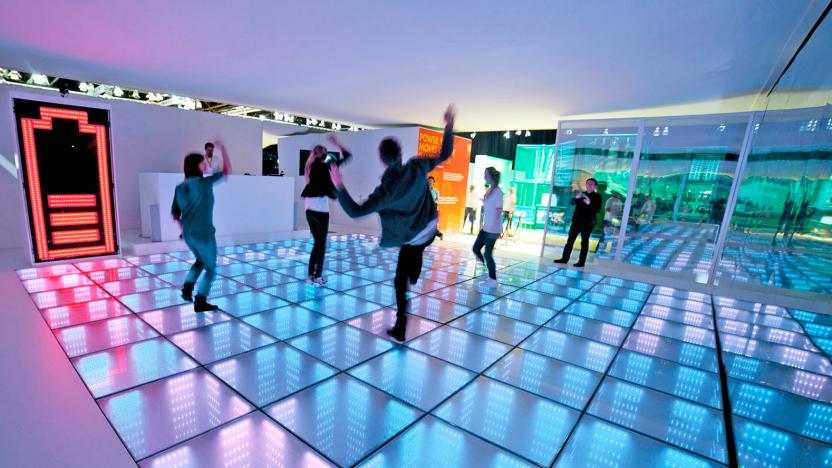Pavegen
Latest

Six energy-harvesting gadgets powered by people
By Cat DiStasio People power is perhaps one of the world's greatest untapped sources of renewable energy. Smart devices that harness kinetic energy from everyday human activities help the environment in more ways than one. By turning motion into useable electricity, human-powered gadgets help reduce reliance on fossil fuels and batteries that damage the planet. At the same time, kinetic gadgets encourage people to keep moving, thereby supporting a healthier lifestyle. From a dance floor that turns your sweet moves into a luminous display to a clever motion-powered light that keeps runners safe at night, we've rounded up six amazing gadgets that take advantage of human movement.

ICYMI: Street view climbing, a "real" hoverboard and more
#fivemin-widget-blogsmith-image-880458{display:none;} .cke_show_borders #fivemin-widget-blogsmith-image-880458, #postcontentcontainer #fivemin-widget-blogsmith-image-880458{width:570px;display:block;} try{document.getElementById("fivemin-widget-blogsmith-image-880458").style.display="none";}catch(e){}Today on In Case You Missed It: Tesla's teased a prototype car charging station powered by strangers' footsteps; Lexus released a video of a hoverboard that's "rideable now," (psst ... it still needs magnets and isn't as cool as this); and Google used mountain climbing's most famous men and women to take street view to Yosemite's El Capitan in this trippy video.

Experiment charges your Tesla with footsteps
Eventually, you might not have to find a charging station when you park your electric car downtown -- pedestrians could do the work instead. Pavegen has teamed up with Tesla to show off an experimental charger that tops up your EV through kinetic energy from footsteps. You'd need "several hundred thousand" steps just to drive a Model S for 20 minutes in a downtown area, the company tells PSFK, so you won't power your vehicle just by running in place. However, this isn't as daunting a challenge as it sounds. Many urban hubs are chock-full of foot traffic, and a sufficiently long stretch of sidewalk could speed up the charging time. It'll be a long while before you see this in action. Pavegen is crowdfunding the technology, and it'll depend on adoption from cities and corporate offices after that. If all goes well, though, people power might be all you need to complete your commute home.

Pavegen taps pedestrians for power in East London (video)
When we were kids, we assumed that in the future everything would be powered by tiny nuclear fusion reactors: automobiles, toothbrushes, time machines (apparently we read a lot of sci-fi from the 1950s). The truth, as usual, is more mundane than all that: some of the more promising advances we've seen in green energy has been kinetic, taking the movement of automobiles or the tides and converting it into electricity. Pavegen, for example, can be set in public walkways to generate as much as 2.1 watts of electricity per hour from the footsteps of grizzled pedestrians. Using marine grade stainless steel and recycled materials, just five of these bad boys distributed over a well-worn sidewalk should be able to generate enough energy to keep a bus stop going all night. If not put into nearby lighting, the units are equipped with lithium polymer batteries for storage. Currently being tested in East London, look for them throughout the UK in 2010. Video after the break. [Via Inhabitat]


